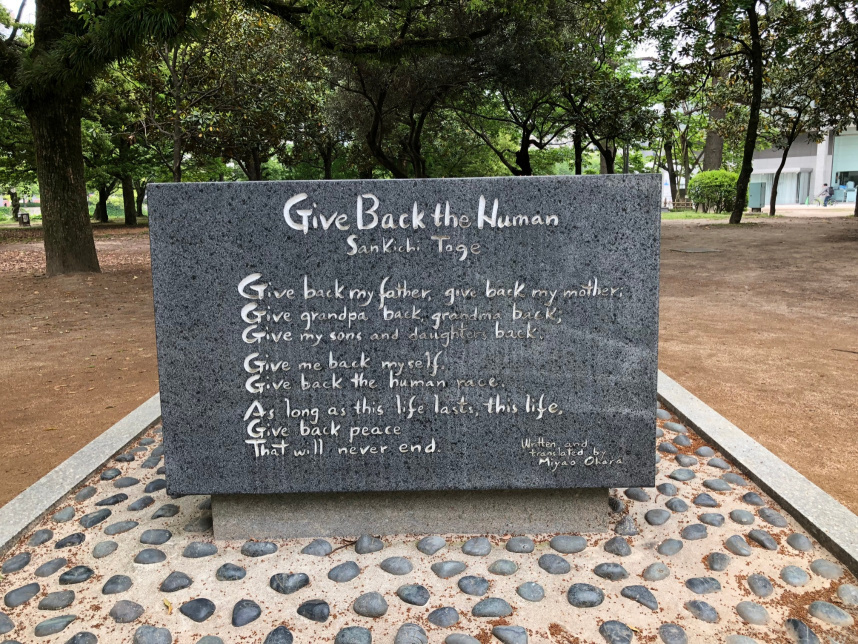 Commentary from Japan Tourism Agency
Commentary from Japan Tourism AgencyMonument to Toge Sankichi
Table of Contents

Located within the Peace Memorial Park is a simple monument to Toge Sankichi (1917–1953), a young poet whose experience of the atomic bombing on August 6, 1945, prompted him to write verse that powerfully conveyed the plight of the victims. He also became a tireless, highly vocal campaigner for the antinuclear and peace movements, and was noted for highlighting the social and political issues that lead nations into conflict.
Toge, then aged 28, was at home in Hiroshima’s Midorimachi neighborhood, 3 kilometers from the hypocenter of the blast, when the A-bomb was dropped. A Catholic who was influenced by both Western and Japanese poets and writers, Toge had by this time already written several thousand works. His first collection of A-bomb-related poetry, Poems of the Atomic Bomb, was published in 1951, while he was hospitalized. That year, the book gained international attention as one of Japan’s entries to the Berlin World Youth Peace Festival.
In the immediate postwar years, Toge’s writings were a valuable source of information on the bombing and its aftereffects, when such information was heavily censored in Japan by the occupying Allied forces. In the following decade, he was particularly outspoken during the Korean War, when US President Harry Truman (1884–1972) refused to rule out using nuclear arms again. Toge died in Hiroshima Sanatorium in 1953, at the age of 36.